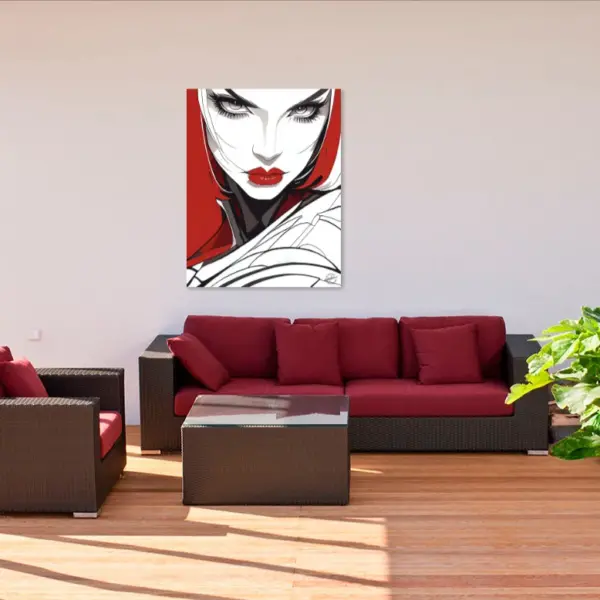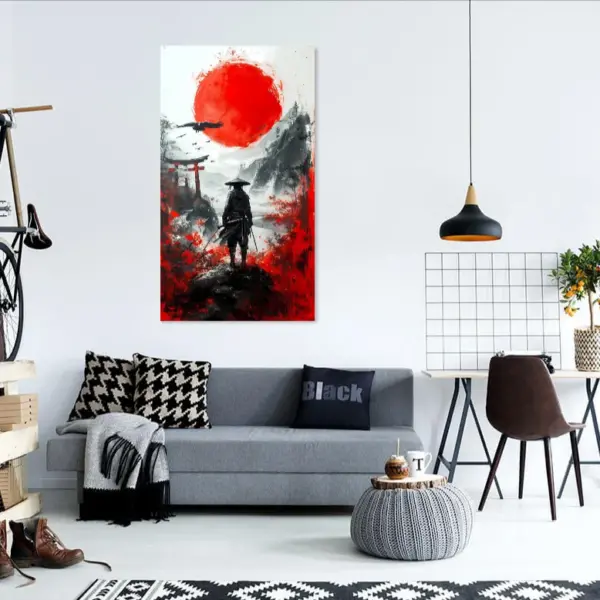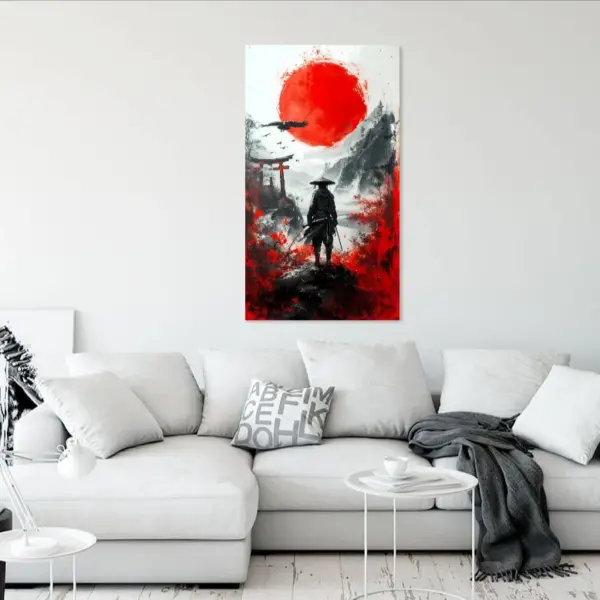The Yoga of Zeus
In “The Yoga of Zeus,” the artist presents a compelling fusion of mythological power and meditative calm. The central figure, an imposing man who embodies strength and wisdom, sits cross-legged, resembling a seasoned yogi in deep contemplation. His muscular physique, adorned with intricate tattoos, suggests a warrior’s history, yet his peaceful posture indicates a state of transcendence. The tattoos themselves, winding across his chest and arms, evoke ancient symbols, blending spirituality with physical prowess.
His hair, a brilliant white, flows naturally, signifying both age and experience. This character is not a youthful deity, but rather one who has lived through eons, now meditating on a higher plane. The artist intentionally blurs the lines between Greek mythology and Eastern philosophy by placing Zeus, the king of the gods, in a yogic pose. The contrast between the aggressive strength typically associated with Zeus and the serenity of meditation is powerful, highlighting the duality of control—both over the self and the external world.
What stands out most in this piece is the small flame delicately held in his fingers. The flame, symbolic of energy, life, and divine power, serves as a reminder of his godly nature. It’s a subtle yet striking element, suggesting that even in moments of calm, there remains a spark of immense power within him. The expression on Zeus’s face is thoughtful and introspective, as if contemplating the balance of destruction and creation, rage and peace, within this tiny flame. The background, a faded swirling symbol, adds a layer of mysticism to the work, merging cosmic themes with the deeply personal journey of the divine.
This artwork challenges the viewer to rethink traditional perceptions of gods and strength. By placing Zeus in such a meditative position, the artist suggests that true power does not lie solely in thunderbolts or outward displays of might but also in stillness, reflection, and self-awareness. It’s a reminder that even the mightiest figures must find balance within themselves.
In terms of placement, “The Yoga of Zeus” would bring depth to any environment. In a yoga studio or a wellness center, it would inspire practitioners to seek strength through mindfulness, combining the physical and spiritual in their practice. In corporate settings, it would serve as a reminder of the importance of introspection and calm amidst chaos and decision-making. Displayed in a personal space, this artwork could serve as a daily reminder of the inner strength that comes from balance and quiet contemplation.
This piece not only redefines the character of Zeus but also infuses spaces with a sense of tranquility, wisdom, and power, reminding viewers of the importance of both inner and outer strength.

This artifact boasts a resolution of 300dpi and measures 70cm (27.5in) on its longest side. It is an excellent way to showcase your style and personality on your wall, adding character to your space. It makes for a unique and lasting gift. Printing at these dimensions will result in high-quality prints. Doubling the dimensions will allow for larger prints suitable for interior decoration. We have provided some artifact sizes based human size to give you an idea.
Looking to purchase art from our online gallery? Follow these simple steps:
- Find the artwork you love and click on it. If you're considering multiple pieces, click "ADD TO CART." If you've decided on just one, click "BUY NOW."
- Feel free to keep browsing our gallery and adding more artwork to your cart.
- To review your selected artworks, click on the shopping cart icon in the top right corner. You can remove any items if you change your mind.
- When you're ready to complete your order, click "CHECKOUT" at the top right corner of the screen.
- After your purchase, you'll receive a download link. Additionally, we'll send the link to your email address for easy access.
Wondering how to pay for your selected artworks? Here's how:
Simply click the "CHECKOUT" button to finalize your order, and then select your preferred payment method. We offer the following options:
- Credit cards (Stripe)
- PayPal
- Bank transfer (Upon placing your order, we'll send you an invoice. Once the invoice is paid in full, we'll proceed to ship the artwork.)
Is the payment secure?
- Rest assured, our payment system is highly secure. We exclusively process transactions that are 3D secured to combat fraud.
- Additionally, as an added measure of protection, we may request identity verification to prevent unauthorized use of your credit card.
Is it possible to request a commissioned artwork with specific size and color preferences?
- Interested in commissioning an artwork of a specific size or color? While not all artists offer commissions for paintings and sculptures, you can request a customized size print.
- Feel free to reach out to us and share your requirements if you're interested in commissioning an artwork. We're here to assist you.
Shipping & Returns?
Purchase Terms of Agreement
The purchase of digital products, including EPS, PDF, AI or JPG downloads and online material is subject to the following terms and conditions. Consumers are advised to review carefully before making any purchase
Payment + Refund Policy
All transactions for purchase of intangible products, pdf, eps, ai or jpg downloads, resource material, and online content are made through payment gateways such as PayPal or Stripe that use SSL encryption. These payment gateways are safe and secure for using all types of credit cards and debit cards in different countries and your details are not stored during this process.
Since your purchase is a digital product, it is deemed “used” after download or opening, and all purchases made on www.daymara.com (Swiss Llc Ltd.) are non-refundable or exchangeable. However, we will provide a full refund if the resolution, print quality, if you have received a product that differs from the product image shown to you at the time of purchase or if there are file errors. Since the products made available here are intangible, there is a strict no refund policy.
Daymara (Swiss Llc Ltd.) reserves the right to amend any information, including but not limited to prices, technical specifications, terms of purchase and product or service offerings without prior notice.
Delivery of Goods and Services
If you do not receive the digital product link upon purchasing, you can immediately contact [email protected] with your transaction/payment details to ensure your product is delivered as soon as possible.
Delivery Process
- The product you purchased is a print-ready visual design product.
- A download link of the product will be presented to you after the purchase. You will be able to download and use the work using this link.
- Delivery is provided with a downloadable link after purchase. Also, no physical product will be sent. Please make sure you understand this point. If you have any questions, please write to us from the contact section.
- Each product may be in different sizes. The maximum printable size of the product is written on the page of the product. It is naturally possible to print larger than this size. But in this case, pixel distortions can be seen.
- Since a downloadable link is offered to you after purchasing the product, the product you have purchased is deemed to have been delivered.
- It is not possible to return the delivered products or cancel the order after this stage. However, we will provide a full refund if the resolution, print quality, if you have received a product that differs from the product image shown to you at the time of purchase or if there are file errors.
- If you encounter a problem with the file you downloaded, please do not hesitate to contact us. Your request will be answered within 1 hour at the latest.

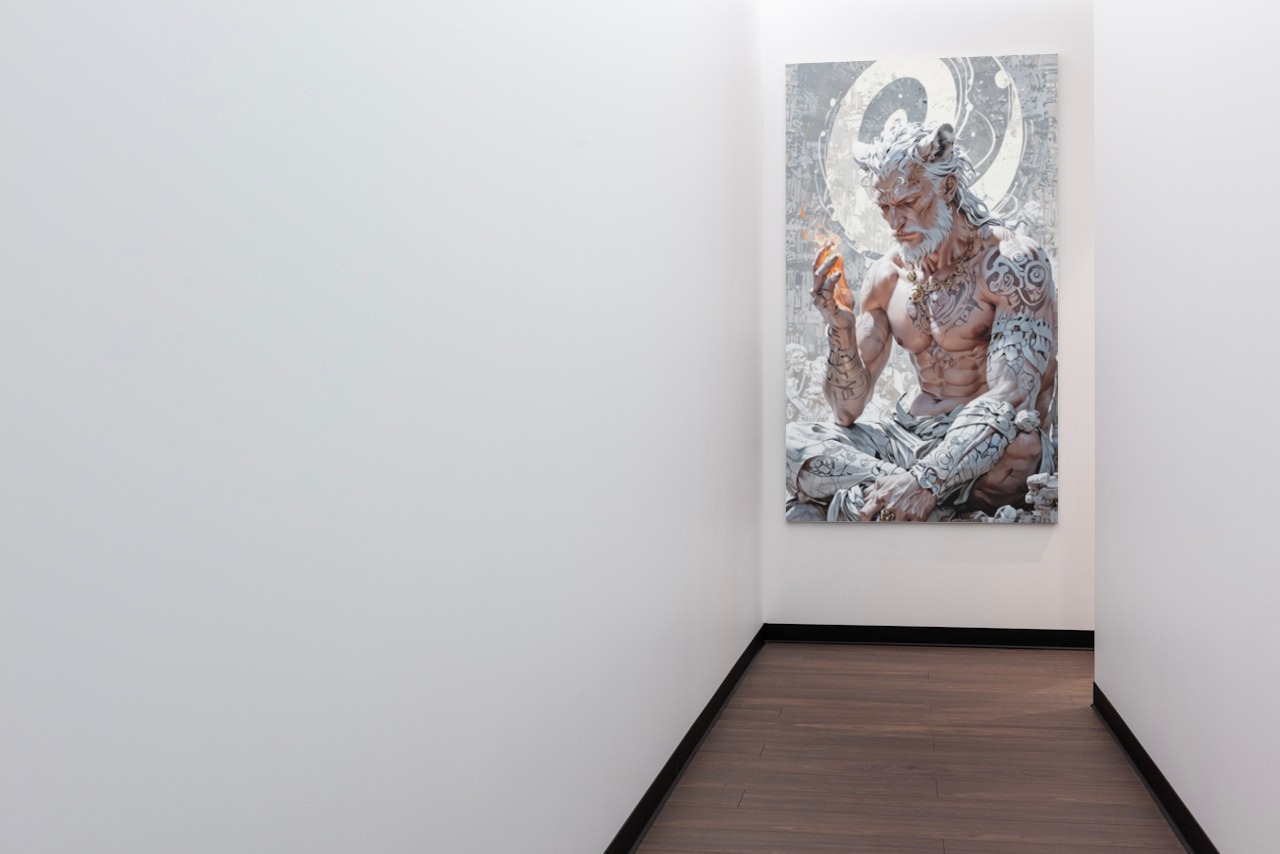
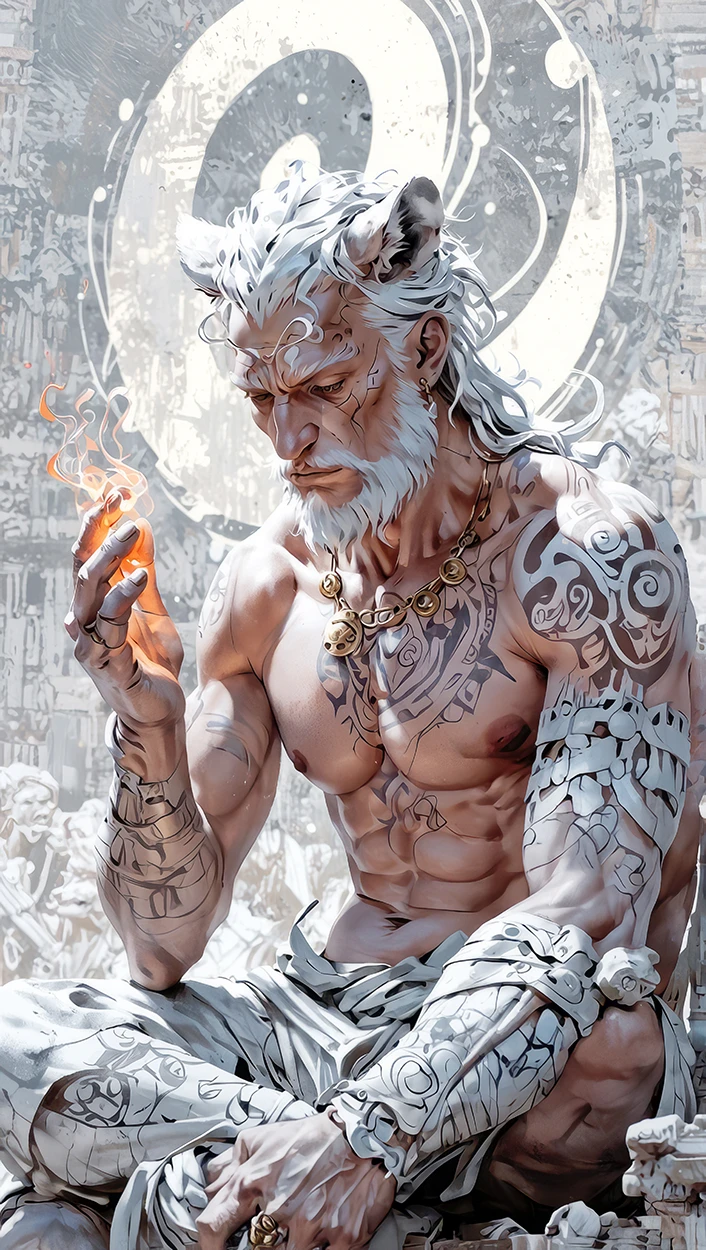

 70-140cm (27.5″≈55″) Printable
70-140cm (27.5″≈55″) Printable